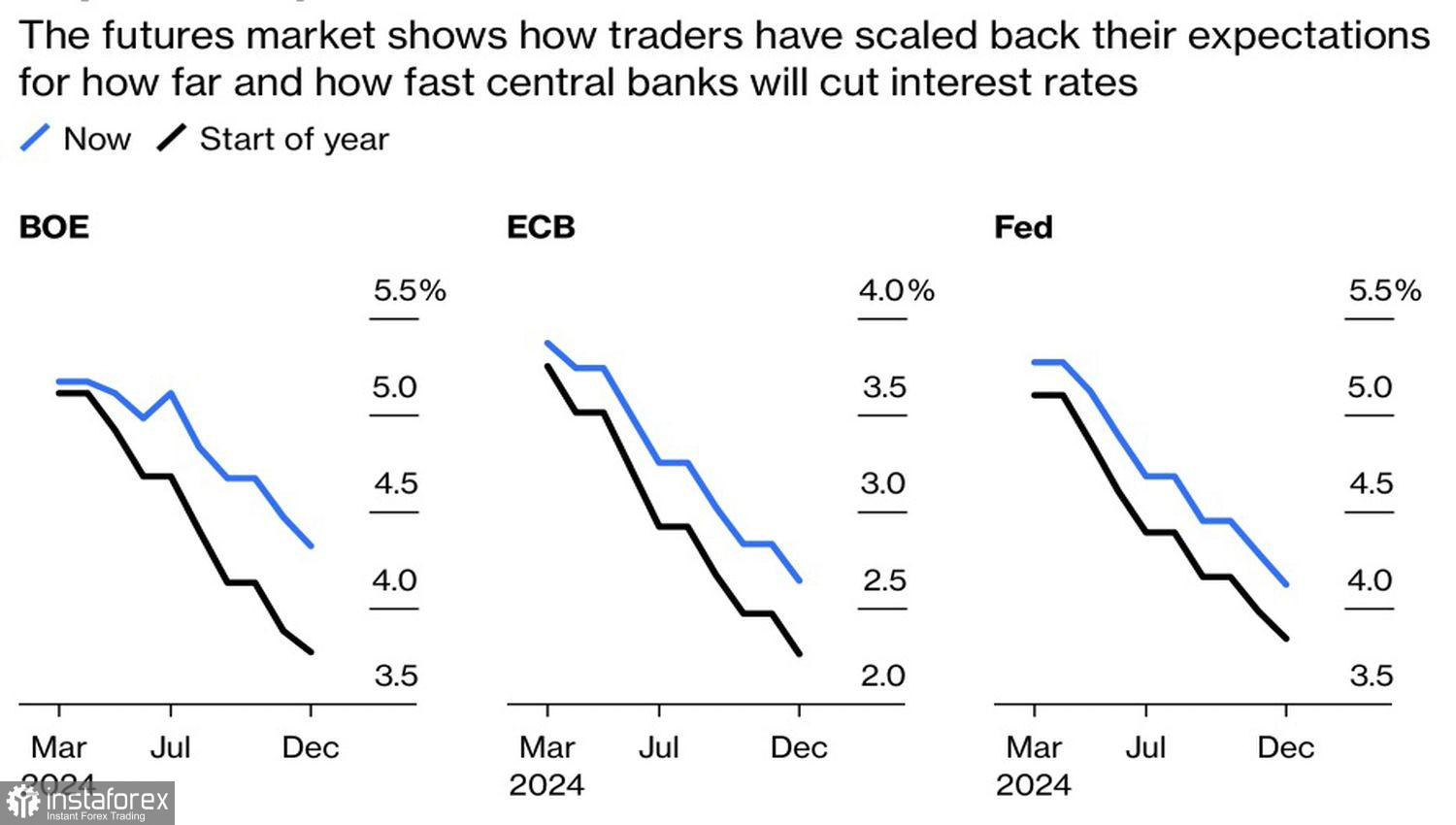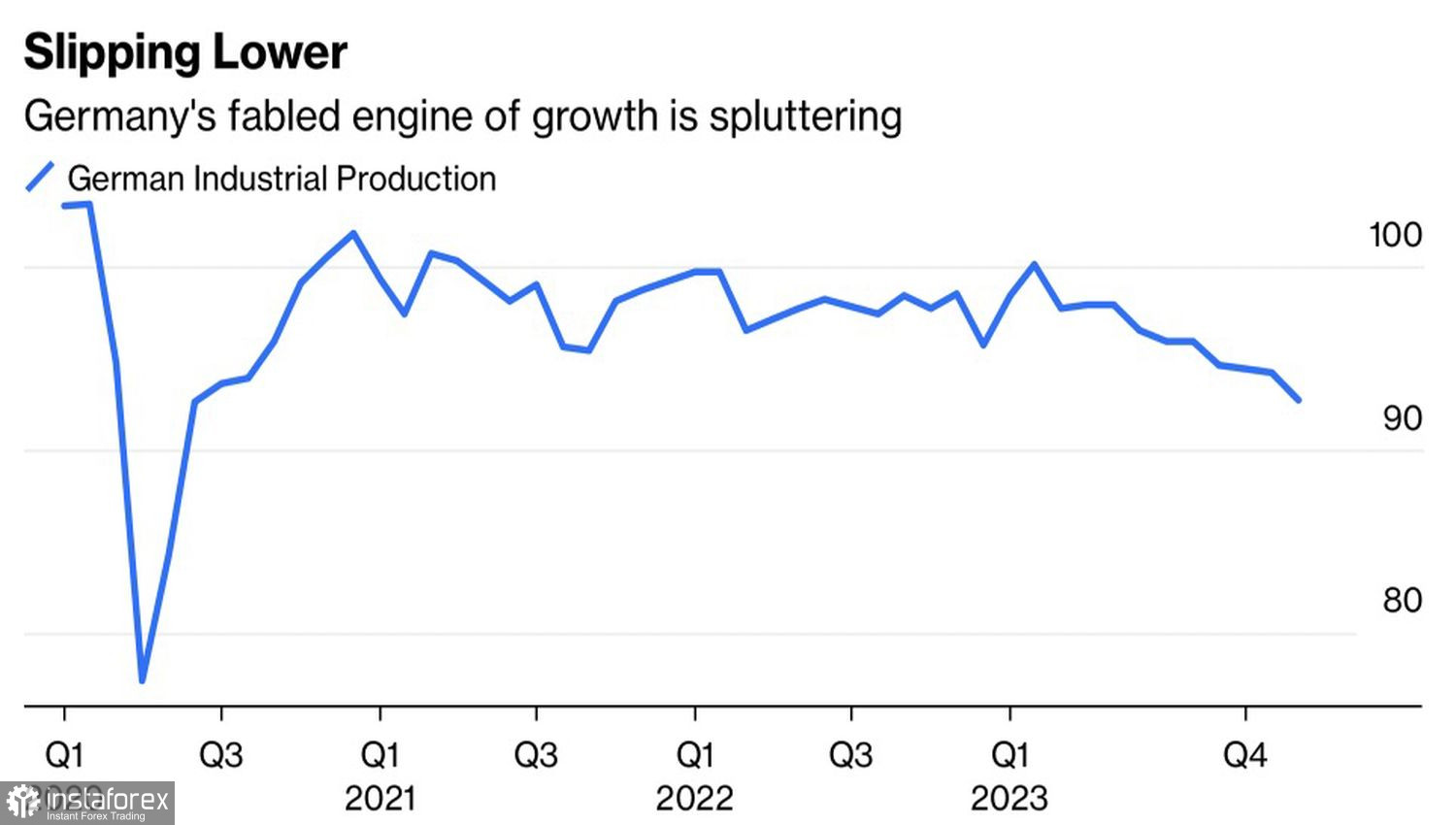The decline in Treasury bond yields, thanks to successful auctions of 3-year and 10-year securities and the ongoing rally in U.S. stock indices, created a favorable environment for EUR/USD bulls, which they tried to take advantage of. Unfortunately, the main currency pair failed to break through beyond 1.078.
When the futures market signaled a 150 bps cut in the federal funds rate at the end of 2023, twice as much as FOMC officials had forecasted, it suggested that the U.S. economy would slow down. Indeed, the higher the likelihood of a recession, the more chances that the Fed will throw a lifeline. However, Bloomberg experts currently estimate a 26% chance of a downturn in the U.S. economy over the next 12 months. This is significantly lower than the 38% for Germany and the Netherlands.
Nevertheless, the futures market continues to shift the timing of the start and the expected scale of monetary expansion in the U.S., the UK, and the Eurozone.
Dynamics of Market Expectations for Central Bank Interest Rates

It is evident that the U.S. is much stronger than the UK and the currency bloc. So why should the Fed start the cycle of easing monetary policy earlier than the Bank of England and the ECB? Germany, with its GDP decline of 0.3% in 2023, the seventh consecutive month of shrinking industrial production, looks like the sickest person in Europe. Nevertheless, central bank officials from London and Brussels continue to talk about inflation but turn a blind eye to the troubles in their own economies.
For example, Isabel Schnabel drew attention to consistently high prices in the services sector at 4%, a stable labor market where wages are growing at 5% and above, a significant easing of financial conditions, and new supply chain problems due to Houthi attacks on ships in the Red Sea. All these events risk reigniting inflation. The ECB must remain vigilant and treat the easing of monetary policy with caution.
Dynamics of Germany's Industrial Production

However, if the Eurozone's economy is weak, it will bend even more under the impact of the deposit rate at the decade-high level of 4%. The currency bloc requires a lifeline in the form of monetary stimulus, and if this happens before the U.S., EUR/USD is likely to continue falling.

What can save the bulls? In my opinion, only further slowing inflation in the U.S. can. FOMC officials claim that the Fed does not necessarily have to wait for PCE to drop to the 2% target. This means that further downward dynamics of the Personal Consumption Expenditures Index will give March a chance to start monetary expansion, putting pressure on the U.S. dollar.
Technically, on the daily chart, EUR/USD shows exhaustion of the corrective movement towards the downward trend. Shorts built up on the rebound from 1.078 should be maintained towards the previously indicated targets at 1.073 and 1.064.





















